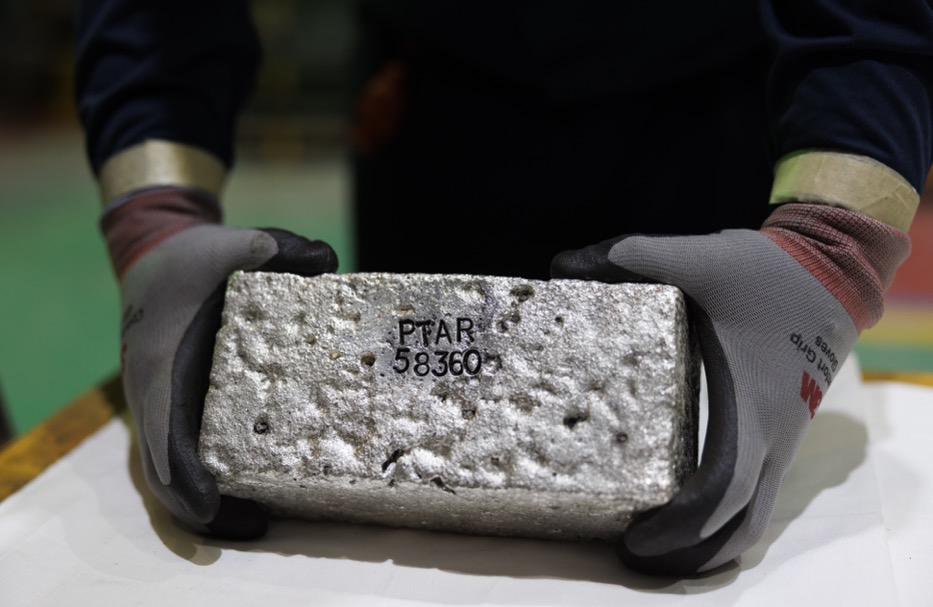When looking to buy gold or any item made of gold, you may hear its purity quoted as something like 24 karat (24K) gold. The number may vary, but karat gold will mean you are dealing with purity, and therefore is a key piece of information to look out for.
Pure gold is too soft and malleable for most practical applications. So, for many purposes, gold is therefore mixed or alloyed with other harder metals.
The history of pure gold
Gold was first used in jewellery as far back as 4000 B.C. Since then, civilizations all over the world have been drawn to pure gold for its rich yellow colour, lustre, malleability, and permanence.
What’s special about 24K — aka pure — gold is that it does not corrode or tarnish, making it the perfect metal for crafting jewellery and other fine objects. Our ancestors have also always loved working with pure gold because it is flexible and easy to work with, but at the same time, incredibly durable. With all of these attractive qualities, gold has been sought after by royalty and peasants alike thanks to its enduring allure.
The uniqueness of 24K gold
To have a better understanding of what 24K gold is and what makes it special, here are a few that you need to know.
What is a karat?
There’s a difference between a carat and a karat, but it does get confusing because both are pronounced as ‘k.’ The difference is quite simple, though. Carat refers to the weight of a jewel, gem, or diamond, whereas a karat refers to the unit of gold purity.
How do you measure a karat?
When it comes to measuring gold with karats, each karat represents 1/24th of a whole. So if you have a piece of jewellery that is stamped 14K, that means your piece of gold jewellery is 14 parts gold and 10 parts copper, silver or some other alloy.
Why does gold have different weights?
Gold is a soft, malleable metal. Because of this, you can have a lot of creativity with gold jewellery making. But, that also means that the jewellery itself becomes more malleable the higher the karat weight it has. Because of this, many jewellers have preferences for the weight of gold they like to work with, as well as their techniques to accompany it. Additionally, the lower the karats, the less saturated the yellow colour and shimmer are.
The karat system
The best: 24K gold
24 Parts Gold — 100% Gold. This is the highest karat and most pure form of gold jewellery. 24K gold is all parts gold without traces of other metals. Because of this, it has a uniquely rich, bright yellow hue. This pureness makes 24K gold highly desirable, the most expensive, and the most often used in fine jewellery. Because 24K gold does not have traces of other metals, the pieces are known for being ‘softer.’ However, it does not make them any less durable, as 24K gold pieces are forged to last a lifetime.
Top quality: 22K gold
22 Parts Gold, 2 Parts Other Metals — 92% Gold. This is the second-highest karat level when it comes to gold jewellery. And even though it only has two parts copper or other alloys, it does affect the colour, taking away some of the natural lustre only pure gold has. Nonetheless, 22K gold is used a lot in fine and high-end jewellery making because of its high purity level.
High quality: 18K gold
18 Parts Gold, 6 Parts Other Metals — 75% Gold. 18K gold is where you can start seeing how mixing in other metals, like copper or silver, affects the colour. While 18K gold still has that warm yellow colour, it is nowhere near as vibrant at 22k and 24k gold jewellery. However, having a quarter of the jewellery made with other alloys does make the piece harder, which is why it is usually used on rings. 18K gold is a great choice for people who want high-quality gold jewellery at a lower price point.
Good quality: 14K gold
14 Parts Gold, 10 Parts Other Metals — 58% Gold. 14k gold is the highest karat of gold that is still considered good for use in fine jewellery. But, because nearly 40 per cent of the weight of the piece is made up of different alloys, you can see a significant difference in the gold hue, shine and saturation.
12K, 10K and lower
Anything less than 14k starts to blur the line between fine and costume jewellery. This is the least expensive kind of gold jewellery you can buy. It’s also important to note, anything 10k and above must be marked with a stamp, so if you cannot find one, be wary about how much gold is actually in it.
Other purity measurements
An alternative to the gold purity measurement is the fineness scale. This is a millesimal or thousand-part scale. It is a more accurate measurement and is gradually being used more extensively.
Using the millesimal fineness scale, 999.999 is the purest gold ever made, produced by the Perth Mint in 1957. But if you have a preference for gold coins of high purity, look for ones with a stated purity of .9999.
What country produces the purest gold?
The Emirate of Dubai, UAE
According to financial marketplace Policybazaar.ae, the Emirate of Dubai is the best place in the world to buy pure gold. The UAE has long had a reputation for being a place where gold of exceptional quality can be sold and traded, with impressive selections available.
Other countries with high-purity gold
The UAE isn’t the only country known for having higher-purity gold. Some other countries known for higher quantities of nearly pure or extremely high-quality gold include:
- India
India has a long history of paying close attention to the purity and quality of gold. Plus, the purchase of gold here is one of the most common practices in major port cities, such as Kochi.
- Thailand
Thailand has gold of high purity that’s fairly readily available. However, it’s advised that you do your homework first to make sure you make purchases from reputable sellers.
- Switzerland
Switzerland also has an appreciation for highly pure gold. What’s more, the high-purity gold sold and crafted in Switzerland is known for its ornate features and designs.







